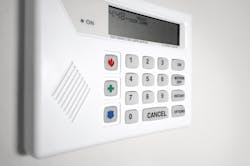SIA applauds signing of Maryland alarm bills
Silver Spring, Md. – The Security Industry Association (SIA) commends the signing of companion bills impacting alarm systems companies in Maryland – House Bills (HB) 645 and 1117 and their corresponding companion Senate Bills (SB) 662 and 927. In early 2018, SIA testified in support of these bills before the Maryland General Assembly, and they have since been signed into law by Gov. Larry Hogan.
Maryland’s HB 645; SB 662 updates long-outdated local regulations by providing a statewide exemption for wireless, low-voltage alarm systems from electrical permitting requirements established before the advent of wireless systems. This bill helps reduce burdens on alarm installers, who are licensed professionals, and companies.
“Technology innovations over the past few years have made home security and fire alarm systems more affordable, effective and reliable. The growing use of these is positive for our communities because the role they play in fire safety as well as reducing burglaries and other crimes is documented and well understood,” said Joseph Hoellerer, manager of government relations at SIA. “As state and local leaders are looking for cost-effective ways to reduce crime, we believe removing these unnecessary and burdensome permitting requirements not only brings Maryland in line with other states in adjusting alarm regulations to today’s technology, it also supports the goal of making our communities safer.”
Maryland HB 1117; SB 927 places sensible limitations on the circumstances under which alarm companies can be fined for violations of alarm system registration requirements in jurisdictions that have false alarm reduction programs. Additionally, these bills limit fines associated with failure to initially register alarm systems to cases in which it was an alarm company responsibility and simply require local municipalities to notify alarm companies when alarm users’ registrations have expired.
“[HB 1117; SB 927] will give alarm companies the chance to work with alarm users to ensure the fullest possible compliance with local requirements,” said Jake Parker, SIA’s director of government relations. “We should all be able to agree that achieving 100 percent compliance with registration requirements – and therefore zero associated fines – would be the best possible outcome consistent with false alarm reduction program objectives.”
Learn more about SIA’s testimony here and its overall advocacy efforts here.


